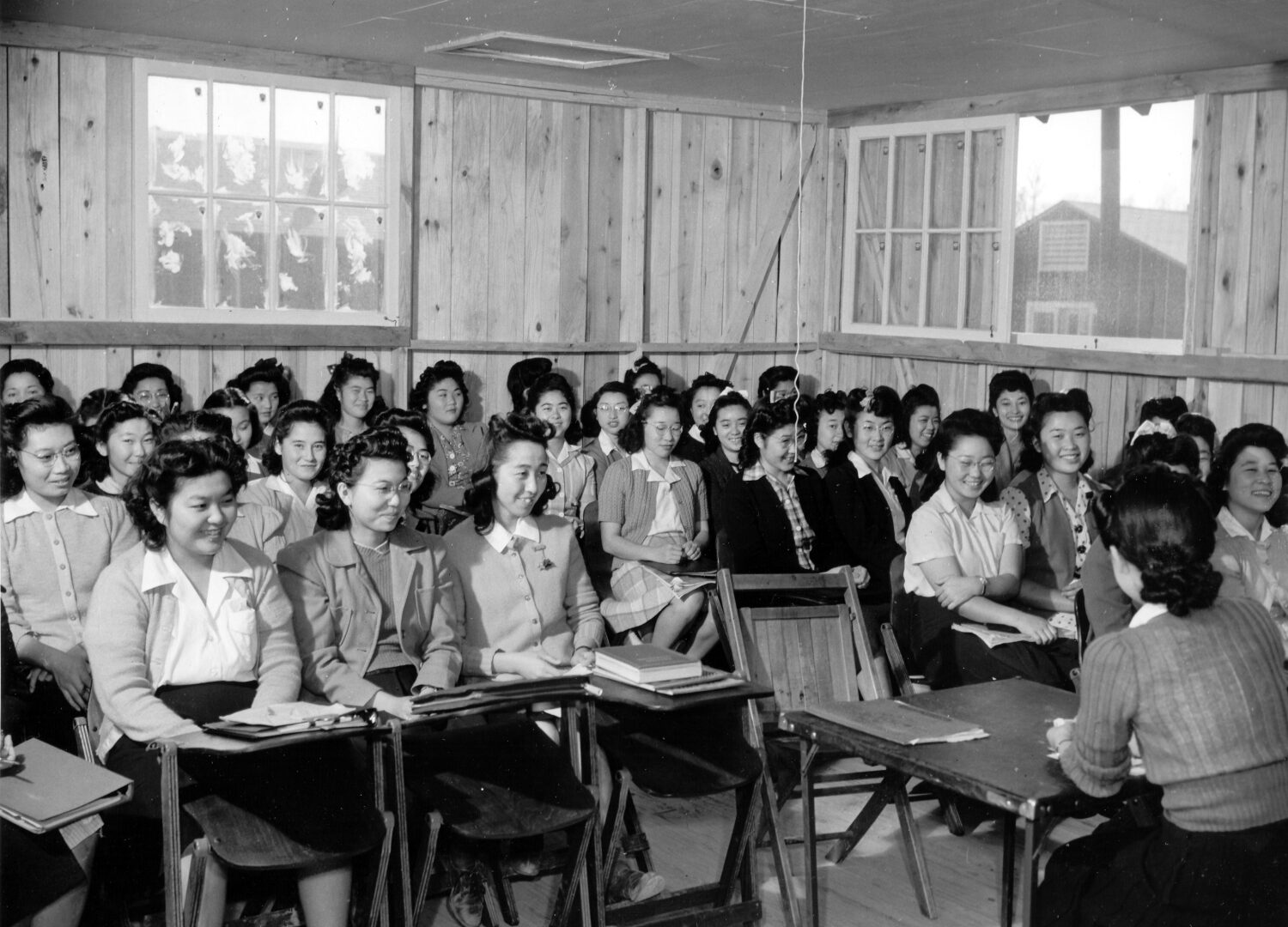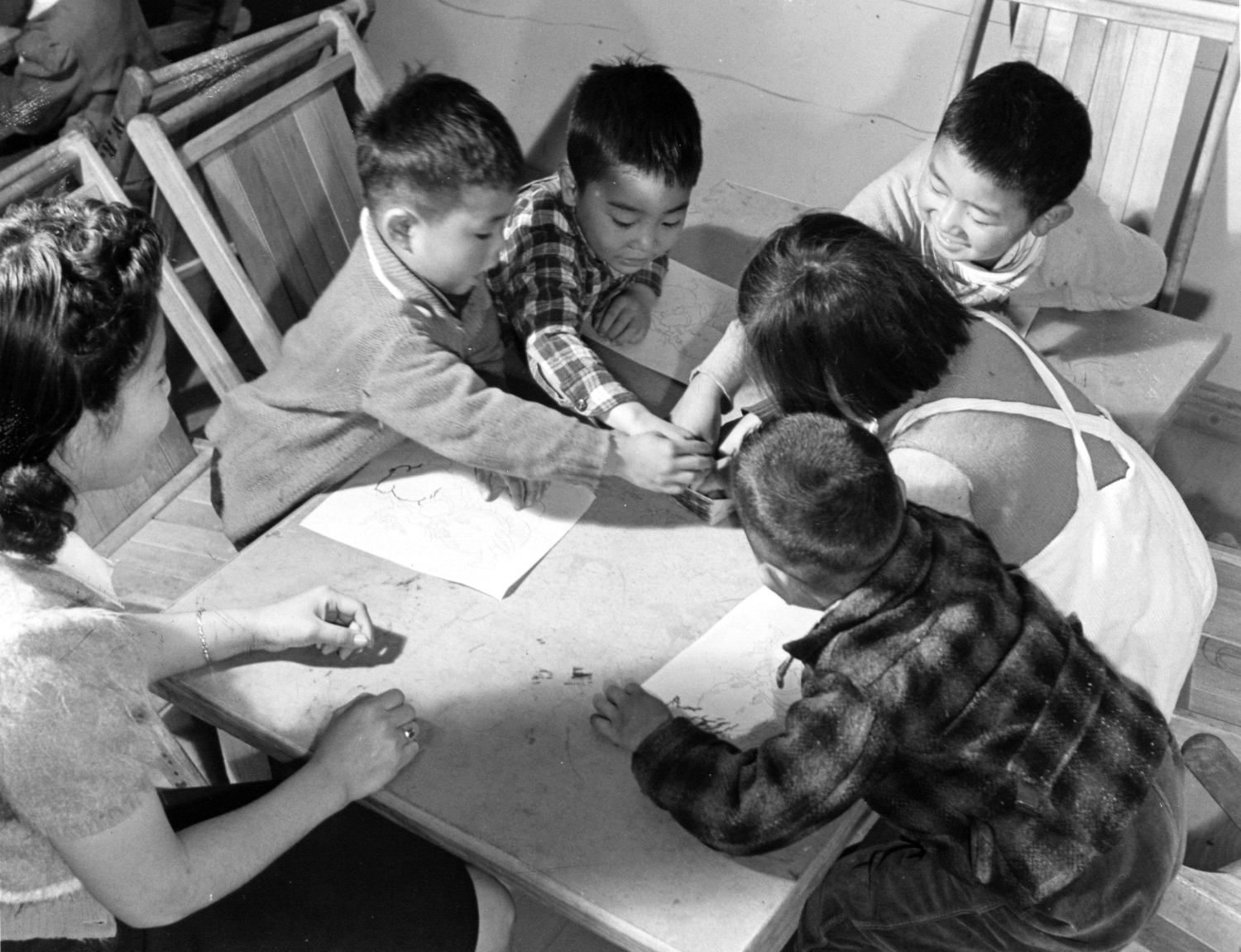Japanese Americans and World War II
Introduction
After Japan attacked Pearl Harbor on December 7, 1941, the United States formally entered World War II. In February 1942, President Franklin D. Roosevelt issued Executive Order 9066, which authorized the secretary of war to turn certain areas into military zones. The 9066 order also enabled the US government to relocate and incarcerate certain groups considered to be a threat to national security. One such group were Japanese Americans, over 80% of whom lived on the West Coast. Japanese Americans were forced to leave their homes and move to ten internment camps built across the United States. Between 110,000 and 120,000 Japanese Americans, the majority of whom were American citizens, were incarcerated in the ten camps. Two of them were built in Arkansas. The Rohwer Relocation Center was located in Desha county and the Jerome Relocation Center in sections of Chicot and Drew counties. Nearly 16,000 Japanese Americans were incarcerated in the two Arkansas camps from October 1942 to November 1945, when they existed.
In this activity, you will examine 12 photos from the Jerome and Rohwer Relocation Camps. These photos can help us understand how Japanese Americans lived in relocation centers and what they did to cope with their situation. All photos in this activity come from the Life Interrupted Collection, 1903-2005.
Activity Questions
This activity contains 12 photos from the Rohwer and Jerome Relocation Centers. Examine and analyze all photos. Pay attention to:
- Natural environment, if a photo is taken outside (landscape, trees, flowers, weather, animals, etc.);
- Built environment (buildings, structures, interiors, etc.);
- People (age, gender, clothes, mood, occupation, relationship to each other, etc.);
- Objects (indoor and/or outdoor);
- Activities (What are people doing?).
Grade school at Jerome Relocation Center
Based on your analysis of all 12 photos, answer the following questions:
- How did Japanese Americans live in the relocation centers? What institutions did they establish? What activities did they organize?
- Why do you think Japanese Americans engaged in so many activities in the relocation centers? Why did they establish schools and businesses? Why did they organize art and performance events?
- What does the photo of a boy at the cemetery tell us about the experience of Japanese Americans in Arkansas? Note that nearly all of them did not live in Arkansas before the war.
- These places were officially called “relocation centers” but historians call them “internment camps.”
- What does “relocation” mean and what does “internment” mean? If you are not sure, check definitions in a dictionary.
- When you think of the word “camp” in the context of World War II, what comes to your mind?
- What difference does it make to call a place “a relocation center” versus “an internment camp”?
Primary Sources
To learn more about the primary sources featured in the activities above, click the following links:
- Aerial view of Rohwer Relocation Center
- Art class at Rohwer Relocation Center
- Men building porch at Rohwer Relocation Center
- Block 7 at Jerome Relocation Center
- Jerome Cooperative Enterprise at Jerome Relocation Center
- Grade school at Jerome Relocation Center
- Second grade class in Thanksgiving Day costumes at Rohwer Relocation Center
- Denson High School Band at Jerome Relocation Center
- Home economics class at Rohwer Relocation Center
- Train at Jerome Relocation Center transferring internees to Camp Granada
- Cemetery at Rohwer Relocation Center
Arkansas Social Studies Standards
Arkansas History, Grades 7 – 8
- Strand: History
- Content Standard 7: Students will examine the impact of historical events and people on the development of Arkansas
- H.7.AH.7-8.6 Investigate social, economic, and political effects of World War I and World War II on various segments of the population in Arkansas
Arkansas History, Grades 9 – 12
- Strand: Era 5: World War II Through the Civil Rights Era 1941-1967
- Content Standard 5: Students will analyze factors that influenced the perspectives of Arkansans from World War II through the Civil Rights Era.
- Era5.5.AH.9-12.1 Analyze the social, economic, and political effects of World War II on Arkansas using a variety of primary and secondary sources
US History Since 1890, Grades 9 – 12
- Strand: Era 8: The Great Depression and World War II 1929-1945
- Content Standard 4: Students will evaluate social, economic, and political changes in the United States during World War II.
- Era8.4.USH.3 Analyze the historical significance of battles, events, and people during World War II using a multiple sources
- Era8.4.USH.4 Investigate social, economic, and political effects of World War II on the American people from multiple perspectives using a variety of primary and secondary sources
Key Terms
Downloadable Guides and Handouts
We encourage K-12 educators to use History Alive: Virtually! in a way that will best match their classroom needs. The “Exercise” handout includes a complete exercise as featured on this website, the “Primary Sources” handout includes only primary sources used in the exercise, and the “Questions” handout includes analytical questions from the exercise but is editable and can be easily changed to best match students’ needs.
Japanese Americans and World War II – Exercises


